Meet the North Yorkshire Moors Railway volunteers who get to live their dreams


For the hundreds of volunteers who work on the North Yorkshire Moors Railway, that fantasy has become a weekly - and sometimes daily - reality. We visited Pickering Station to meet some of the enthusiasts who give up their time to keep this delightful heritage asset running.
The man who makes steam dreams come true
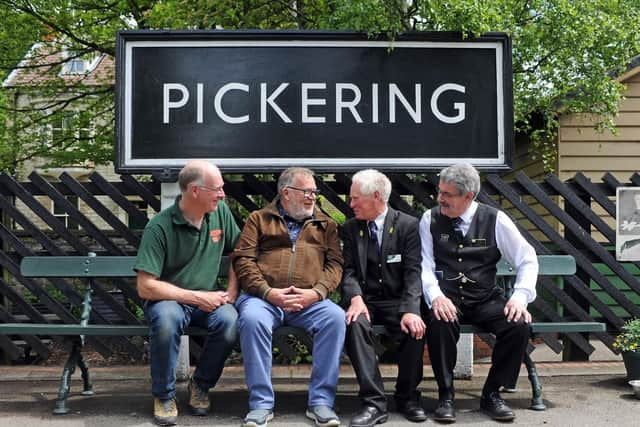

Advertisement
Hide AdAdvertisement
Hide AdPeter Nendick is a toastmaster who has worked for the Royal Family, and his expertise in co-ordinating special events is put to good use on the railway.
The 71-year-old drives from his home in Hull, where he also works in a hotel, to oversee weddings, birthday meals and themed dining evenings from Pickering Station.
Peter began volunteering after his wife's death, and has found solace and purpose with the friendly team at Pickering.
"I've got a model railway at home, and my friend told me I should come on the real one! I started out on catering - I was a 'trolley dolly' and I've worked as a steward on the Pullman dining trains. Now I'm a bit older I work with charter services, running the weddings, birthdays, curry nights and other events.
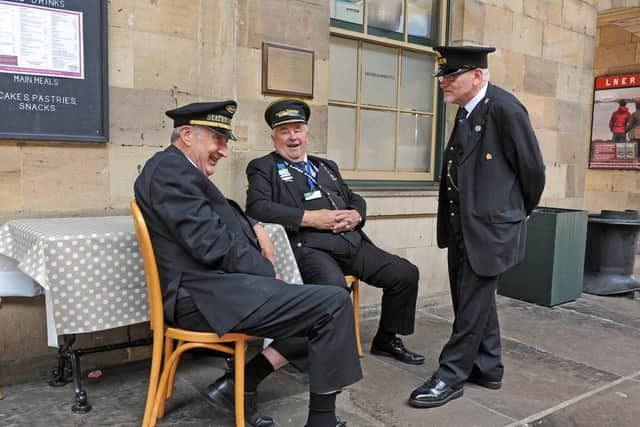

Advertisement
Hide AdAdvertisement
Hide Ad"If you're not a people person then you don't want to do it. It's a family here - they're good people. It's a 90-mile round trip from Hull for me, but I'm very happy here - if I didn't do this I would vegetate.
"You never know what's going to happen. I remember a coachload of Norwegians turned up for the Pullman train, beer is much cheaper here than it is in Norway, and they just went crackers at the bar - they only got as far as Goathland!
"I've served Terry Wogan on a Pullman and recently Julie Walters was here filming The Secret Garden. We even had Peter Wright, the Yorkshire Vet, come to buy a ticket the other day.
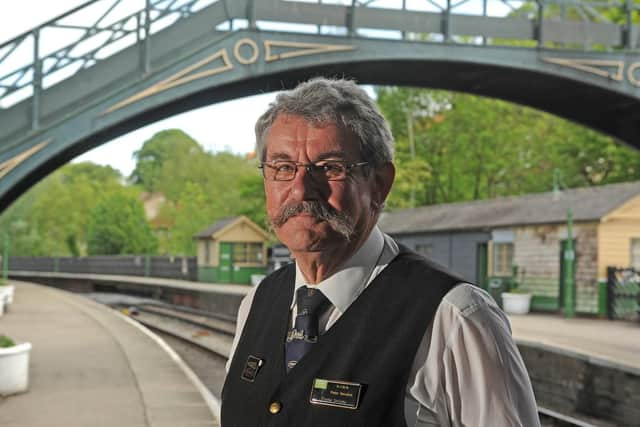

Advertisement
Hide AdAdvertisement
Hide Ad"The weddings are a new venture - we had 27 last year. There are different packages - after the ceremony on the platform they will travel by train to Goathland, some will have the reception and meal in a carriage. You prepare all day so when it all comes together it's wonderful.
"With volunteering, I think you have to forget about the expense of travel - the rewards outweigh that."
The London businessman who throws himself into a simpler life
Geoff Pearson ran a PR agency in London for most of his career, but always felt the romantic pull of the North Yorkshire Moors Railway.
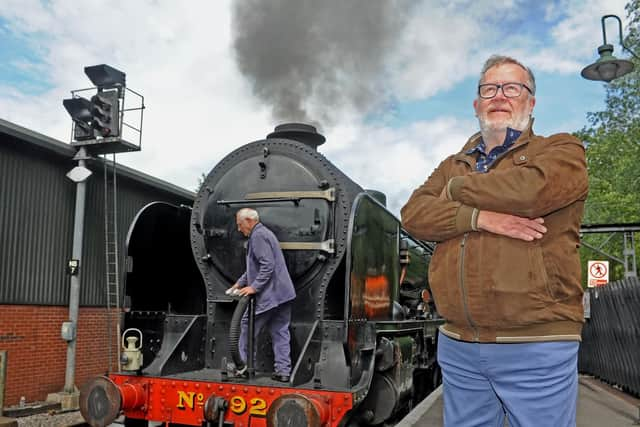

Advertisement
Hide AdAdvertisement
Hide AdHis wife's family had a history of service on the line before its closure in the 1960s - her grandfather was in charge of the permanent way and lived in a railway house in Pickering, while her aunt ran the parcels office. Now, the couple live just yards from the station, and Geoff has been involved with the NYMR for 26 years.
"We moved up here from Kent - Pickering is a very relaxing place to live. My first role was to dig a hole for the new toilets! I've done practically everything since then. I've been a waiter in the dining cars, a barman, station foreman...
"Today, everything is very tightly controlled and managed, but back in the old days we did a lot of fiddling around ourselves. If we were working on the platform buildings and a train came in, one of us would jump down and act as station foreman. The whole operation is much bigger now."
Advertisement
Hide AdAdvertisement
Hide AdGeoff found his niche in his role as special events officer, planning the steam galas, 1940s weekend and Santa Special trains. He's now stepped down to spend English winters with his daughter's family in New Zealand, but still gets involved whenever he can.
"I still do the Santa Specials - we're looking at adding disabled access now. You've got to keep up with modern regulations so it's quite exciting. It's a lot of hard work to pull an event off, but you do feel it is really worthwhile when it all goes well.
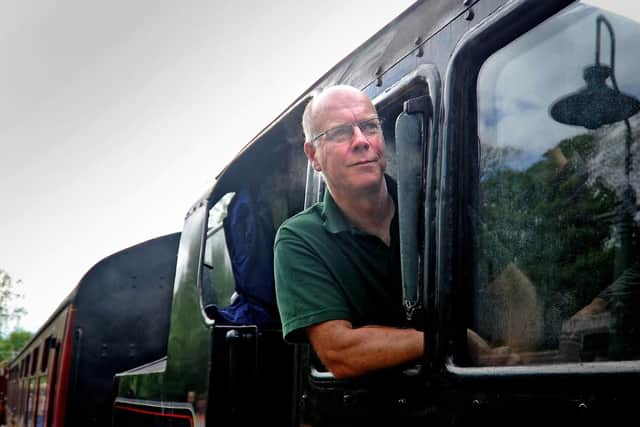

"The most challenging part of volunteering is trying to make sure people reach the standards required of a heritage line - you've got to do everything properly. It's frustrating when someone rushes a job.
"We don't have enough money to do everything we want, so we have to improvise - that's a challenge too. And our volunteer force is getting older. It would be great to get some people in their 40s who are physically fit and want to do something else at the weekends. There's no minimum commitment but we'll find them something to do.
Advertisement
Hide AdAdvertisement
Hide Ad"The NYMR is the Manchester United of heritage railways - we carry the most passengers in the country and it's a tough railway to run, with steep hills and moors. We are just guardians, here to protect it and make sure it stays the same. We're hoping to pass on a legacy to the next people who follow us."
The first female engine driver who defies sexist insults for the job she loves
Beth Furness is the first woman to have driven a train on the North Yorkshire Moors Railway - but her experiences haven't always been positive.
The former teacher began volunteering on heritage railways in her native Staffordshire with her steam-mad family, before transferring to the NYMR in 2000 when she moved north to study.
Advertisement
Hide AdAdvertisement
Hide Ad"I got hooked on the footplate! When I came up here I originally I wanted to work on the track. The drivers and firemen were all blokes."
She began as an engine cleaner, learning on the job, before passing her fireman's exams in 2002 and qualifying as a driver in 2013.
"You've got to learn to drive in all weathers and in different conditions. I was the first woman on the footplate, although there are a few now who want to train and who are working their way up the firing ranks.
"The reaction when I was first in the cab was one of suspicion. People thought I wasn't up to it - although it has become a lot easier over time.
Advertisement
Hide AdAdvertisement
Hide Ad"There are some really positive people who are pleased to see you, but there is also complete suspicion and sometimes grudging respect. I've had some awful exchanges with people who just weren't prepared for the sight of a woman on the footplate - having a bloke there is the status quo. There have been inappropriate comments about woman drivers but I just block those out. Lots of people come to say hello to me too!
"The challenge of driving such a powerful engine is to control it in a way that is safe. On a good day the engine sounds amazing and we often get feedback from passengers if it has been a smooth ride. That gives you an enormous sense of pride."
Beth now works full-time at the National Railway Museum in York, and has no plans to step down from the footplate.
"It's in the blood - I'll keep going until my body gives up."
Advertisement
Hide AdAdvertisement
Hide AdThe childhood trainspotter who now tends the engines he once watched
Retired teacher Mike Floate still has the railway magazines he began buying as a teenager.
In one is a picture of an engine called the Eric Treacy, built for the London, Midland and Scottish Railway in the 1930s. The locomotive's class, the Black Fives, regularly hauled summer specials from Leeds to Whitby on the line before its closure and preservation.
As a London schoolboy, Mike was a keen trainspotter, and the Eric Treacy was one of the engines he remembers watching in the capital. Now, the locomotive is owned by the NYMR and working again, and Mike has the privilege of looking after her as a volunteer in the sheds.
Advertisement
Hide AdAdvertisement
Hide Ad"Living in Kent, I volunteered at a local heritage railway and when we decided to move up here, the NYMR was one of the attractions. It's really friendly here - in the sheds we have our own Facebook group with 4,500 fans!
"You can't pay to do what we do - we've got to earn the privilege and we are so lucky, We listen and learn, and you can always just ask if you want to know something.
"The photo in my railway magazine shows the Eric Treacy in 1969, when I was 14 years old. Now, I've put coal in her, lit her fire, ridden on her footplate - the younger me would never have believed what I've gone on to do.
"Seeing an engine you've helped to restore finally in steam again is amazing - you can't put that feeling into words."
The man with more service than the railway itself
John Bruce was here at the very beginning.
Advertisement
Hide AdAdvertisement
Hide AdIn 1969, he was a schoolboy, and the line - closed by British Rail four years before - had yet to open to visitors again. He's now notched up 50 years of service as as volunteer - he was also a professional railwayman before retirement - and has the ultimate top job: station master at Goathland.
"When I first started in 1969, we had only just got access to the line again. We had to re-install the signalling and track.
"We re-opened in 1973, with just one engine and three or four carriages. Back then we would never have conceived how big it was going to become. We were running on a shoestring and a lot of equipment needed replacing. It was all new to us."
In 1979, the volunteer station master at Goathland stepped down, and John was seen as the natural successor.
Advertisement
Hide AdAdvertisement
Hide Ad"The role is mainly dealing with people and maintaining Goathland - we like to keep it as close as possible to a 1920s station and respect its heritage.
"There's always conflict between funding and heritage - it's a major balancing act. The railway was designed for far fewer passengers than it carries now."
The line faces many challenges as it looks to the future - it needs to secure a coal supply at a time when the government is considering banning the fuel for domestic use, meaning many merchants are likely to go out of business. The issue of health and safety is constantly on the agenda - there are whispered fears that centrally-locking electric doors may have to be introduced eventually, and indeed many passengers seem to expect the doors to open automatically as they wait to board.
"It's a highly legislated environment now, but seeing a train running full and the reactions of passengers who have never seen a steam engine before is incredible."
Advertisement
Hide AdAdvertisement
Hide AdJohn's life on the railways has come full circle. His favourite engine has just undergone restoration, having been at the NYMR since its early days. But John was also present for her final journey in service, in 1968 on a colliery line near Sunderland.
A history of the NYMR - Britain's favourite heritage railway
The North Yorkshire Moors Railway was originally a working mainline called the Whitby and Pickering Railway. It was built in 1836, and the first trains were horse-drawn - the journey from Pickering to Whitby took two and a half hours.
In 1845, the York and North Midland Railway acquired it, and introduced steam locomotives. They built today's stations and structures, but had to use an iron rope to haul trains up the Beck Hole incline. They also connected Pickering to York by adding a new line to the south.
Advertisement
Hide AdAdvertisement
Hide AdIn 1854 the operators were taken over by the North Eastern Railway, who decided to construct an alternative route in the 1860s to avoid the notorious incline - this is the line which is still in use today. The old route is now a 'rail trail' footpath.
The death knell for the line sounded in the 1960s, when Dr Beeching's infamous review of uneconomical railways began. The Pickering to Whitby section was deemed to have too few passengers to remain a viable operation, and the axe fell. The last passenger train ran in 1965 and freight continued only until 1966.
The line was closed and decommissioned, but in 1967 a group of enthusiasts began to muster with the aim of bringing it back into use. They ran several open weekends and steam galas before they were eventually granted permission to run trains on the route again in 1973.
In 2007, Network Rail gave the NYMR permission to run trains from its terminus in Grosmont along the modern mainline into Whitby.
Now, 18 miles of track are in use and there are stations at Pickering, Levisham, Newton Dale, Goathland and Grosmont, where passengers can also change onto mainline services into Whitby.